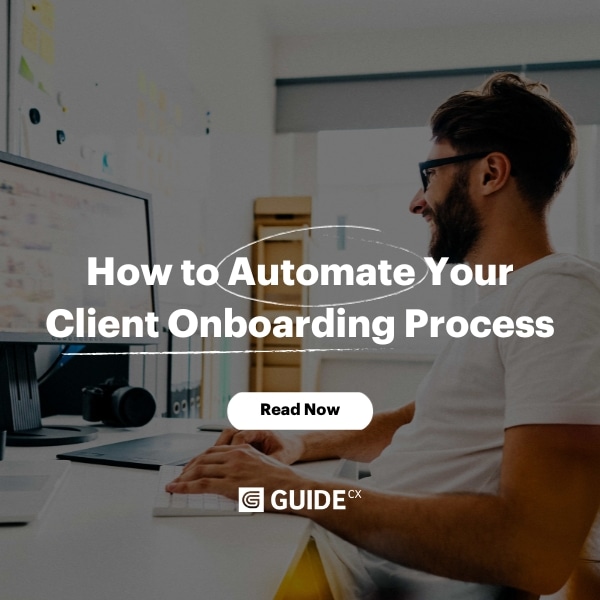
A lot of effort goes into closing a sale, but signing a contract isn’t the end. It’s just beginning. What happens after the sale determines what kind of experience your customer will have. This experience will determine whether they will stay your customer long-term. A smooth customer onboarding handoff from the sales team to the onboarding team is your best chance to make a good first impression. To set the stage and pull it off, you need protocols that put your clients first and help you meet their needs.
Here are five onboarding do’s and don’ts to help you perfect the post-sale customer onboarding handoff.
Sales to Onboarding Do’s and Don’ts
Do: Provide Frequent, Transparent Communication
Too often, new customers wait in limbo between the end of the sales process and the beginning of the onboarding process. The sales rep has moved on, but days or weeks go by before someone from the implementation team contacts the client. If the team being onboarded had little to do with purchasing your product or service, they might be unsure what it is and why you’re contacting them.
This communication black hole, as we like to call it, doesn’t mean that your onboarding team is just sitting idly by. You might be hard at work on internal processes like setting up a new project, coordinating with the sales team, and holding internal kickoff calls.
However, if you don’t communicate any of that to your client, they’ll think you just forgot about them. When you finally get in touch, things will start off on the wrong foot.
The solution is to plan your communication from the beginning of your project. For example, suppose you integrate your sales CRM (like HubSpot or Salesforce) into your client onboarding solution. In that case, you can automatically send a welcome email to your new customer once the deal closes. This should include an overview of what to expect and contact information for the implementation manager.
Don’t: Overwhelm New Customers with Too Much Information
Making contact right away is critical to onboarding success, but overwhelming your new customers with too much information can backfire.
A welcome email is a good chance to provide a project overview and make introductions. It’s not the place to include dozens of links to training videos and complicated technical guides. That can be overwhelming. Too many links or attachments can trigger their spam filter and take you straight to their junk folder.
If you’re able, create a communication process with well-timed emails that give customers the information they need when they need it without making their heads explode.
Do: Gather as Much Information as You Can about Your New Customer
You need to know as much about your new customer as possible to deliver the best customer service. Coordinate with the sales team to find out how the customer got to you, what excited them the most about your product or service, and what they hope to get from the onboarding experience.
If you’re using a client onboarding solution, integrate tools like Salesforce and HubSpot to automatically transfer information from the sales team to the customer success team. The platform’s central repository for relevant documents ensures nothing gets lost in a manual process.
Gathering this information about your new customer beforehand saves your customer from asking questions twice. It also helps you develop a client onboarding plan that achieves success for you and your customer.

Don’t: Make Promises You Can’t Keep
Do you know what your sales team promised during the sales process? Is it something you can deliver? A smooth customer onboarding handoff includes ensuring you know what clients expect once you know that, managing expectations about if—and when—you can deliver it.
How do you set realistic onboarding expectations?
Create a project schedule that outlines every step of your process. Customers need to know exactly what you’ll deliver and what you expect from them to achieve a successful outcome. Include realistic timelines, so they know when they’ll be getting it. If you make project steps transparent, you can avoid over-promising and under-delivering.
You can also ensure that customers understand when their tasks are holding up the project—and avoid calling them out during status meetings. Transparency helps keep everyone on the team—internal, customer, and third party—accountable.
If customers are happy with the initial onboarding experience, you can create long-term relationships and positive word-of-mouth that will pay dividends for a long time.
Do: Provide the Right Resources
Your customers may have gotten a demo of your product during the sales process or even had a short-term free trial. But they probably haven’t considered what your product or service can do.
The onboarding process is the perfect time to give them one. If you’ve gathered the right information and asked the right questions, you can tailor this in-depth look to your customer’s definition of success. It’s a great chance to demonstrate how your product or service will get them where they want to go.
A client onboarding solution can eliminate the communications black hole with automated outreach. They can help outline all the onboarding steps to help you set realistic and achievable expectations. They can also show customers how your product can meet their specific needs and help you create valuable long-term relationships.
Talk With a Guide Today
Discover how GUIDEcx can help you improve efficiency by reducing your customer onboarding timeline and increasing the capacity of your project managers. Our unparalleled professional resources and unwavering commitment to excellence support our industry-leading customer onboarding solution.

